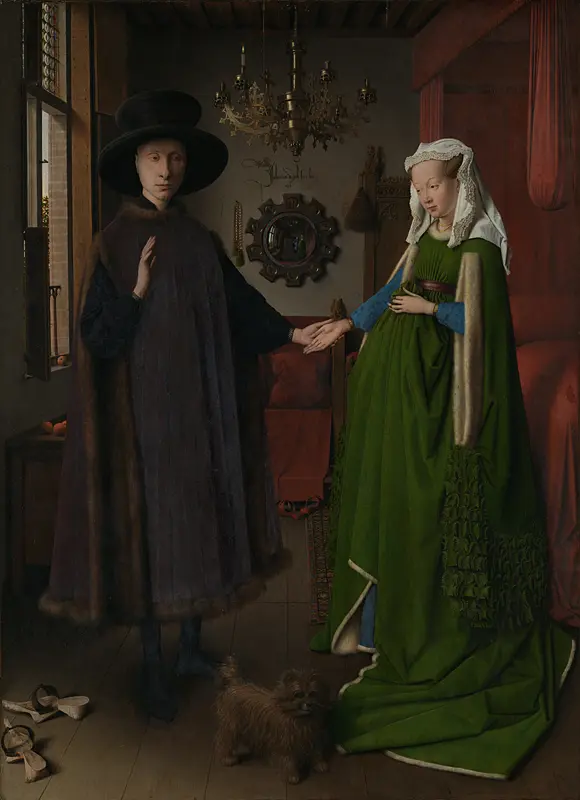While oil color has been a popular painting medium among artists since the 16th century, the invention of acrylic paint in the mid-20th century began to shift interests. Beginner artists were especially drawn to acrylic for multiple reasons, but oil color continues to hold a steady reputation within the professional art community.
Snapshot of This Post:
Quick Background of Oil Painting
Oils vs Acrylics (with an artsy challenge)
Oil Painting Techniques
Background of Oil Painting
The What – oil paint is most commonly made from pure powder pigment mixed with linseed oil to create a buttery paste
The Where & When – experimentation with oil-based mediums began in the 14th century and developed into a painting medium in Venice by the 15th century.
The Why – at first oils were used as a glazing finish on tempera paintings until further experimentation during the Renaissance produced the new medium
Arnolfini Portrait, Jan van Eyck 1434, Oil on Wood

Oil Paint vs. Acrylic Paint
Oil Paint
will stay wet for days
glossy finish emphasizes color
requires
hazardous solvents to thin or remove paint
Acrylic Paint
dries within 30min-1hr
matte finish appears flat
may be thinned with water and removed with basic cleaning solutions
Texture
Vibrancy
Clean Up
Can You Guess the Medium?
Oil Painting Techniques
Indirect Painting
The more traditional process of oil painting is referred to as indirect and focuses on creating the artwork in layers. This technique begins with a monochromatic underpainting that establishes the basic shapes and values of the piece. After this layer has dried the artist will go back and add color and further definition of the subject matter. This technique produces more details and smoothly blended brushstrokes compared to the following technique.
Alla Prima Painting
Literally meaning “all at once” this technique is completed much faster than indirect, as in within a few hours rather than days. This process eliminates the idea of separate layers as you work on shape, value, and color all at the same time. This technique produces artworks with more visible brushstrokes, softer edges, and overall less detail.
When deciding which painting medium and technique to choose it is important to consider what kind of artwork you want to make. Do you want a more realistic or impressionistic piece? Do you want to take your time and dive deep into the process or are you looking for a quick painting session with easy clean up? Either way, make sure to exercise your creativity and have fun!
Check your answers to our Guess the Medium challenge below!